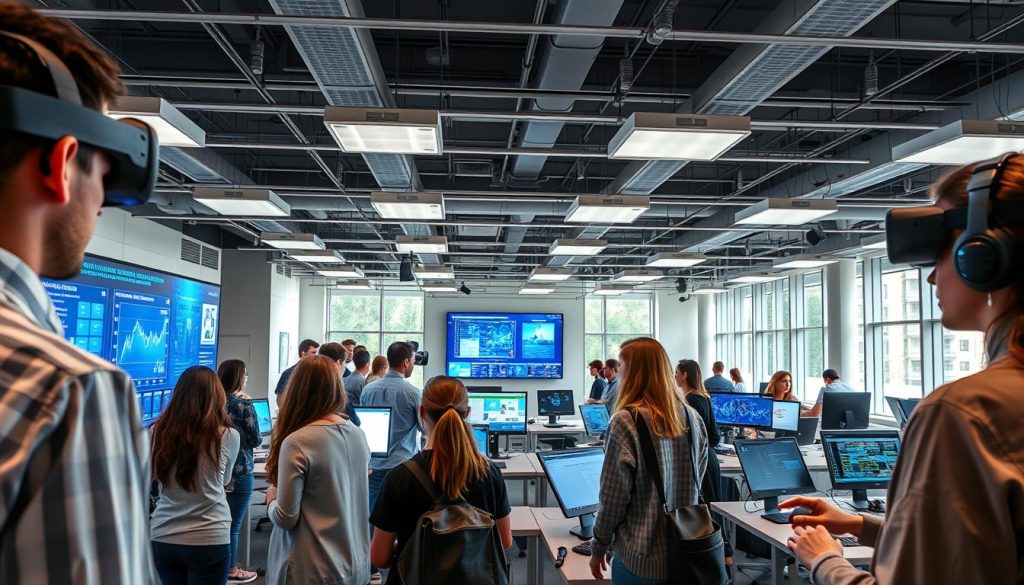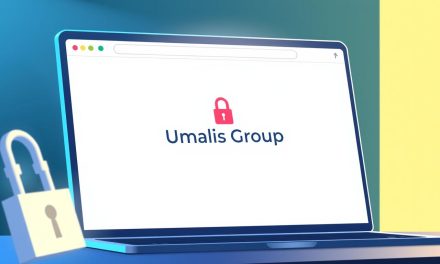Work in France is changing fast. Automation, climate priorities, and digital innovation are reshaping roles across industries. Over a billion jobs will transform in the next decade, and closing skills gaps could add trillions to the global economy.
This Ultimate Guide shows how to map your path — from identifying the right skills to choosing training, coaching, and on-the-job learning that fit French workplaces.
You’ll find clear steps for needs assessment, goal setting, learning methods, frontline enablement, and impact metrics. The guide covers foundational, socio-emotional, specialized, and digital abilities and how they apply across regions and sectors.
Employees and employers both win when teams share a plan. That shared language aligns people and business strategy, boosts resilience, and creates real growth opportunities.
Table of Contents
Key Takeaways
- French workers face rapid change from automation and digital shifts.
- Use this guide to define needs, pick training, and measure impact.
- Learning includes formal courses, coaching, and on-the-job practice.
- Shared plans help employees and organizations align goals.
- Focus on foundational, socio-emotional, specialized, and digital skills.
Why Skill Development Matters Now in France’s Evolving Labor Market
France’s labor market is in flux as automation and the green-digital transition reshape job tasks and career paths.
Automation, green-digital transition, and a changing workforce
Global forces are local realities. Automation and AI, EU climate rules, and faster digital adoption will affect more than 1.1 billion jobs worldwide in the next decade. In France, manufacturer, energy, retail, logistics, and healthcare roles are already shifting.
Data show urgency: about 23% of firms name workforce skills as a major constraint. Some 450 million youth go without economic opportunities because their knowledge doesn’t match market needs.

Hybrid and remote training expand access across regions and shifts. Closing gaps could add roughly US$6.5 trillion globally in seven years, yet most countries spend under 0.5% of GDP on adult lifelong learning.
Continuous learning is more than a program — it is a strategic response. Treating skills as critical infrastructure helps businesses boost productivity, manage regulatory change, and give employees clear paths for growth.
Defining Skill Development: The Capabilities That Power Modern Careers
Today’s workplaces demand a balanced set of capabilities: core literacy, social agility, technical know-how, and digital fluency.
Foundational and higher-order abilities include literacy, numeracy, problem-solving, and analysis. These basics help employees make clear decisions and interpret data in daily tasks.
Socio-emotional strengths
Communication, teamwork, self-control, and leadership boost collaboration and customer satisfaction. In fast-paced French workplaces, these traits help teams adapt and resolve conflicts quickly.
Specialized and technical areas
Role-specific expertise covers materials, procedures, tools, and certifications used in sectors like manufacturing, hospitality, and healthcare. Practical mastery of technical skills makes an employee immediately valuable on the floor.
Digital fluency as a cross-cutting layer
Digital abilities let people access, manage, evaluate, and create information safely. They amplify learning and allow teams to use new systems, automate routine work, and share insights.
« Digital skills are not optional — they connect every other capability and drive competitiveness in the green-digital transition. »
- How these areas interact: good communication speeds adoption of new tools.
- Example: a technician who pairs diagnostics with digital documentation improves uptime and traceability.
- Tip: self-assess across these categories to find the best priorities for training and career progress.
Building a Skills Development Plan: From Needs Analysis to Action
A clear plan begins with real data: maps of what people can do and what the business needs. Start with simple instruments that give a rounded view of current capabilities.

Gather evidence: data, interviews, and observations
Combine short quizzes, self-assessments, and LMS reports to spot patterns. Add individual interviews and manager observations to validate the numbers.
Translate findings into SMART goals
Make goals specific, measurable, achievable, relevant, and time-bound. Align each goal with a strategic objective so training resources target high-impact outcomes.
Prioritize roles, competencies, and timelines
Rank needs by strategic impact, urgency, and resource availability. Focus first on roles that influence safety, revenue, or regulatory compliance.
Engage stakeholders and pick the right tools
Secure leadership sponsorship, coach managers to support employees, and share clear milestones. Use an LMS or a single tool to track progress and link objectives to performance reviews.
« Quick wins, strong sponsorship, and daily integration of learning make plans stick. »
- Run assessments this month.
- Set SMART goals for the quarter.
- Prioritize critical roles and launch targeted training.
For practical templates and a step-by-step approach to career planning, see career planning and growth.
Training Methods and Technologies That Accelerate Learning
Effective training blends hands-on practice, short lessons, and immersive tech to fit busy teams.

Face-to-face formats remain best for hands-on technical skills and safety drills. Classroom workshops let instructors observe technique and correct errors in real time.
E-learning and blended approaches give scale and flexibility. Use online modules for broad updates and reserve in-person sessions for practical practice to reduce downtime and keep quality consistent.
Microlearning for daily reinforcement
Microlearning delivers 3–5 minute bursts that fit inside a shift. Short lessons improve retention and let employees apply knowledge immediately without long interruptions.
XR and virtual labs
Immersive environments such as virtual campuses and labs let teams rehearse risky tasks safely. Programs like ActiVaR show higher engagement and fewer training incidents in technical fields like auto mechanics.
LMS and AI-powered systems
Modern LMS platforms with educational AI personalize paths, automate assessments, and centralize analytics. These tools link face-to-face and online records so managers can track participation and performance in one place.
- When to use which format: classroom for safety-critical tasks; e-learning for updates; blended for scale.
- Standards and reusability: set content rules so courses stay current as rules and tech change.
- Address challenges: counter learner fatigue with mobile-first content and coach support for uneven digital access.
- Link learning to roles: map pathways to job requirements and certifications to support compliance and career progression.
For practical templates that tie training to career paths, see career planning and growth.
Empowering Frontline Employees and Teams with Practical Skills
Frontline teams need practical routines that make better decisions fast and keep customers happy.

Clear communication, conflict resolution, and a consistent customer experience are top priorities for people working directly with the public in France.
Microlearning nudges—3–5 minute daily refreshers—help new practices stick without pulling staff off the floor. The Deskless Report 2024 found 56% of managers want more cross-training and upskilling, so short modules are a practical way to answer that demand.
Adaptability, problem-solving, and decisions under pressure
Use scenario-based drills so employees rehearse choices they may face during busy shifts. Role plays and quick debriefs build confidence and cut errors.
Coaching and leadership pathways for managers and aspiring leaders
Promote coaching as a daily habit: short feedback loops, job shadowing, and buddy systems work well.
- Focus: communication, conflict resolution, customer experience.
- Practice: scenario-based drills and microlearning nudges.
- Support: coaching, cross-training, and emotional intelligence modules.
| Priority | Action | Impact |
|---|---|---|
| Communication | Short scripts + role play | Faster resolution, consistent service |
| Decision-making | Scenario drills during shifts | Reduced errors, quicker response |
| Manager pathways | Micro-coaching + shadowing | Higher retention, clearer promotion routes |
| Cross-training | Rotations and brief modules | Better coverage, improved morale |
Combine recognition and small wins to keep motivation high and show how these practices boost business outcomes.
For targeted approaches to manager learning and pathway design, see strategies for managerial growth.
Measuring Impact: KPIs, Productivity, and ROI of Skills Development
Start with a small set of practical indicators that show whether learning changes on-the-job behavior.
Completion, satisfaction, and performance metrics that matter
Track enrollment, completion rates, and learner satisfaction to see uptake and acceptance. Add time-to-proficiency and role-specific performance to measure real change.
Verify results on the floor with observation rubrics and short knowledge checks so managers can confirm consistent practice.
Calculating ROI: productivity gains, error reduction, and retention
Link training to operations: measure productivity per shift, error rates, quality scores, and downtime. Convert fewer incidents and faster onboarding into euros to show finance teams clear returns.
Continuous evaluation and iteration to close persistent gaps
Use dashboards and monthly reviews so HR, managers, and leaders share one view of progress. Run lightweight experiments (A/B content, cadence changes) to improve quickly.
Close the loop by reallocating investment to programs that move metrics and by publishing successes to build trust.
- Practical KPI set: enrollment, completion, satisfaction, time-to-proficiency, role KPIs.
- Operational links: productivity, errors, customer scores, safety incidents.
- Measurement cadence: dashboards, reviews, and rapid tests to refine content.
For a practical approach to aligning career goals and measurable progress, see professional growth.
Programs, Resources, and Opportunities in France and Europe
From EU grants to company apprenticeships, available resources let organizations close gaps and expand access fast.
Leverage partnerships and funding. Public funds, regional councils, and EU programs can co-finance training, while World Bank tools (like SABER-WfD and STEP surveys) help diagnose needs and guide investments.
Leveraging partnerships, funding, and workforce systems
Use diagnostics and grant-ready plans to win support. Funders look for clear goals, KPIs, and durable partnerships with schools, NGOs, or local authorities.
Data-driven proposals that reference expected outcomes—employment rates, completion, and earnings—stand out to public and private investors.
Employer-led initiatives, apprenticeships, and sector-based training
Employer-led programs and apprenticeships align curricula with real job tasks. These models improve employability and raise earnings, as sector pilots across Europe show.
« Blended public and private investment scales the most urgent programs — from green jobs to advanced manufacturing. »
- Map EU and national funding streams and local partners before designing programs.
- Co-design courses with sector bodies and universities to access XR labs and modern methods.
- Use international tools for assessment to benchmark and refine your strategy.
Make programs sustainable. Build consortiums, set measurable KPIs, and write grant proposals that explain long-term governance and impact.
For actionable guidance on aligning programs with career paths, see career guidance resources.
Conclusion
Building accessible, personalized learning paths makes change manageable. Continuous, targeted approaches to skill development help employees and teams adapt to automation, digital shifts, and climate priorities.
Follow a simple path: assess needs, set SMART goals, pick practical training, empower frontline teams, and measure impact. Make learning fit into the workday and back it with clear communication, feedback, and recognition.
Leaders should align goals with business priorities and resources so programs are focused and credible. Try a quick pilot: one role, one skill, one KPI in the next 30 days.
Use local programs and partnerships to scale what works. For practical steps and tools for professional growth, see professional growth.
FAQ
What does "Skill Development" mean for professionals working in France?
It refers to the continuous process of gaining capabilities, knowledge, and technical expertise that help employees perform better and adapt to change. In France’s labor market, that includes improving digital literacy, mastering industry-specific tools, enhancing communication and leadership, and staying current with regulations and green transition priorities. Programs can be employer-led, funded by public schemes like CPF, or delivered through partnerships with training centers and universities.
Why is investing in upskilling important right now in France?
Automation, the green-digital transition, and shifting workforce needs are changing job tasks fast. Upskilling helps businesses stay competitive, improves productivity, and reduces hiring gaps. For employees, it opens career opportunities, increases job security, and supports mobility across sectors such as manufacturing, IT, and services.
How do I identify the most urgent gaps in my team’s capabilities?
Start with a skills gap analysis using performance data, manager interviews, and direct observations. Combine quantitative metrics with employee feedback to map current abilities against role requirements. Prioritize roles with high impact on operations or those facing rapid technological change, then set timelines and resources for training.
What are the core categories of competencies organizations should focus on?
Focus on foundational competencies like literacy and numeracy, socio-emotional abilities such as communication and teamwork, specialized technical expertise tied to job roles, and digital competencies for safe information use and content creation. Balancing these areas ensures a workforce that’s versatile and resilient.
Which training methods work best for frontline teams?
A mix works best: face-to-face sessions for hands-on tasks, microlearning for quick refreshers in the flow of work, and blended approaches for flexibility. Coaching and mentoring help with soft skills and leadership pathways. Use simulations or VR for high-risk scenarios to build confidence without operational disruption.
How can technology improve learning outcomes and tracking?
Learning management systems (LMS) and AI-enabled platforms support personalization, content curation, and data-driven insights. They track completion, engagement, and performance changes, helping managers measure progress and tailor follow-up learning to boost retention and productivity.
What KPIs should organizations use to measure training impact?
Track completion rates, learner satisfaction, competency improvement, on-the-job performance, error reduction, and retention. Convert productivity gains into financial terms to estimate ROI. Regularly review these KPIs to refine programs and address persistent gaps.
Are there funding options and partnerships available in France to support workforce learning?
Yes. Companies can tap public funding, sectoral funds, and apprenticeship schemes. Partnerships with chambers of commerce, universities, and private training providers expand access to courses, coaching, and certification. Employer consortiums often share resources for sector-based training.
How do I create effective learning goals for employees?
Use SMART goals—specific, measurable, achievable, relevant, and time-bound—linked to business outcomes. Align goals with career paths, role priorities, and projected technology changes. Involve managers and learners in goal setting to ensure ownership and motivation.
What role do managers play in sustaining continuous learning?
Managers act as sponsors and coaches. They provide on-the-job practice opportunities, give timely feedback, and remove barriers like workload or access to tools. Their support turns one-off courses into lasting behavior change and improves team performance.
How do organizations keep training content relevant amid rapid technological change?
Maintain ongoing horizon scanning for industry trends, collect user data from LMS platforms, and collaborate with vendors or academic partners. Update curricula regularly, pilot new tools like XR or virtual labs, and use microlearning to deliver timely updates without major course redesigns.
What practical steps help employees transfer learning into real work results?
Design training with immediate application in mind: include workplace projects, on-the-job coaching, and KPIs tied to post-training performance. Reinforce learning with follow-up sessions, peer communities, and access to job aids or digital resources for sustained adoption.





